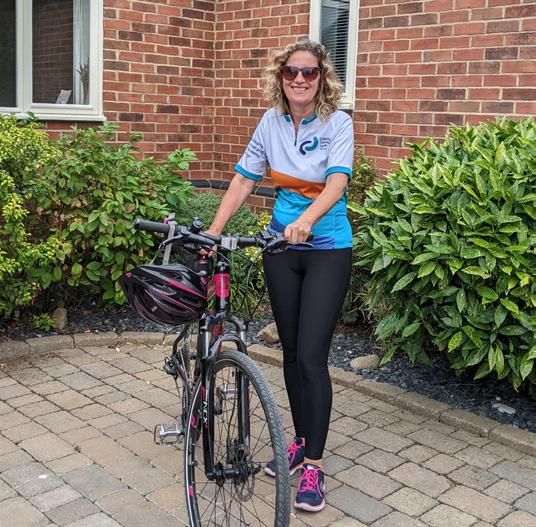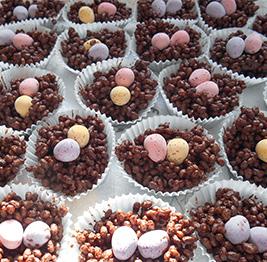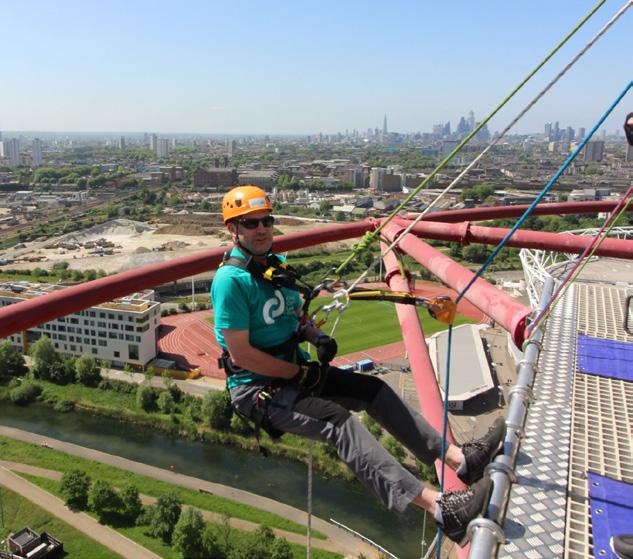Keeping active
How can children with cancer stay active? What should you consider? What is being done to support young patients?
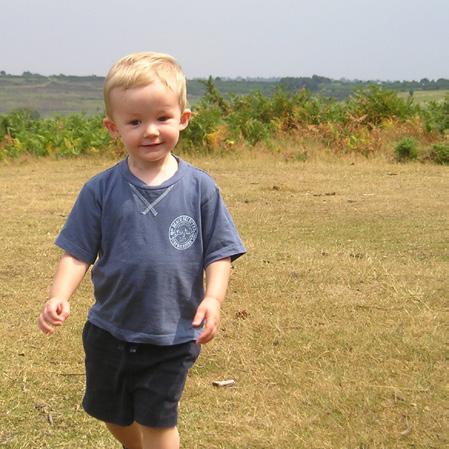
EMPOWERING CHARITY SUPPORT
PIONEERING PROJECTS AND INITIATIVES
Patient Story
Jake Heasman, diagnosed with a brain tumour as a child, tells us how his experiences of cancer have helped drive him on to sporting success Page 6
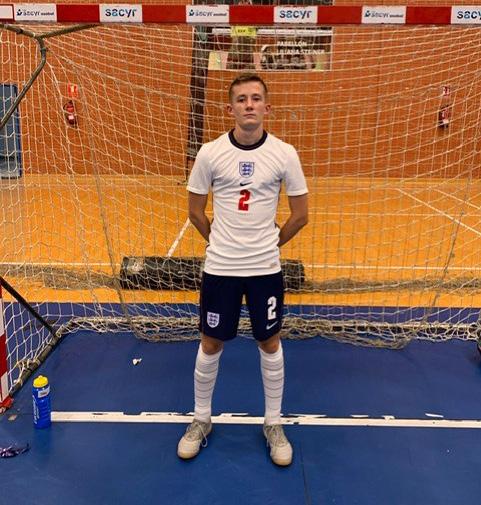
STAYING ACTIVE HELPED WITH PHYSICAL AND MENTAL WELLBEING
BACK TO BASICS:
Exercise pathways in paediatric oncology
Tips and advice for creating sustainable exercise pathways from hospital to school Page 8
Emma Cooper tells us how her daughter Madeleine's determination to continue with gymnastics helped her during and after treatment for a germ cell tumour
Page 10
INSIDE THIS ISSUE... ON KEEPING ACTIVE
11 Becca Knowles, specialist paediatric physiotherapist at Brainbow based at Addenbrooke's Hospital, tells us about its pioneering project employing a PE teacher within its hospital school
12 Saskia Wells, diagnosed with a brain tumour aged 16, explains how being one of the first patients in the UK to receive one-toone exercise therapy support helped her recovery
13 Sarah White, CEO of Supershoes, tells us how it gives young patients a pair of special shoes to help them move more
14 Liz Pharoah, a cancer exercise specialist and trustee at Cyclists Fighting Cancer, tells us how the charity provides specially adapted cycling equipment to support young people living with and beyond cancer
16 Kate Millar, paediatric physiotherapist at Bristol Royal Hospital for Children, tells us about a sports and activities day organised for young cancer patients
17 How can we help childhood cancer survivors get active? A research projected funded by CCLG
EVERY ISSUE
04 Medical adviser
Dr Ren Manias introduces the theme of ‘Keeping Active'
04 News in brief A round-up of the latest updates in childhood cancer
08 Back to basics
Dr Peter Wright, Hayley Marriott and Dr Alba-Solera-Sanchez write on sustainable exercise pathways
15 A parent's view Kat Earley, mum to Cohen who was diagnosed with rhabdomyosarcoma aged four, writes on the importance of staying active during and after treatment
18 60 seconds with...
Abu Sidhanee, a children's physiotherapist and CCLG member, tells us about what's happening in physiotherapy to support children's cancer patients
19 Ask the expert Tom Fletcher, specialist paediatric exercise therapist, answers your questions on physical activity
ON THE COVER
05 Physiotherapists Debbi Rowley and Lucy Waller offer advice on what to consider before starting physical activity and tell us about some of the initiatives happening to help children with cancer move more
06 Patient story
Jake Heasman, diagnosed with an optic pathway glioma as a two-year-old, writes on how his experiences of cancer have helped drive him on to sporting success
10 Emma Cooper tells us how her daughter Madeleine's love for gymnastics helped her both physically and mentally during her cancer treatment
is a free, quarterly magazine for families of children and young people with cancer.
Contact aims to reduce the sense of isolation many families feel following a diagnosis of childhood cancer.
Children’s Cancer and Leukaemia Group brings together childhood cancer professionals to ensure all children receive the best possible treatment and care. Contact magazine was founded by The Lisa Thaxter Trust and CCLG and first published in 1999.
The contents of Contact are the copyright of the publishers. Articles may be reprinted without charge provided that credit is given to Contact magazine. A copy of any reprinted article should be sent to the editor at the address above. Please let us know your thoughts and feedback about Contact by emailing our Editor at editor@cclg.org.uk
Editorial Board:
Managing Editor – Ashley Ball-Gamble
Editor – Claire Shinfield
Assistant Editor – Sam Chambers
Medical Adviser – Dr Bob Phillips
Medical Adviser – Dr Ren Manias
Ceri Hogg – Nurse, Cardiff
Mike Francis – Parent and Survivor, York
Katherine Ince – Survivor, London
Dr Vikki Langford – Psychologist, Birmingham
Dr Rebecca Mulholland – Psychologist, Sheffield
Rachael Olley – Parent, CCPA
Gayle Routledge – Parent, Stafford
Samantha Schoolar – Survivor, Coventry
Gill Thaxter – Parent, Coulsdon
Nicky Webb – Nurse, East Midlands
Sally Morrison – Nurse, Leeds
Past issues of Contact: The wide variety of articles published during the year in Contact adds up to a valuable and informative reference archive. If you would like any back issues, please contact the Editor. Details of key articles in previous editions are listed on our website.
www.cclg.org.uk
KEEP IN TOUCH
Contact Letters, CCLG, Century House, 24 De Montfort Street, Leicester LE1 7GB
Editor: Claire Shinfield editor@cclg.org.uk
facebook.com/ChildrensCLG
twitter.com/CCLG_UK

instagram.com/CCLG_UK
@CCLG_UK
Your messages...
From Contact's last edition: “What a wondeful story”
On Will's inspiring story
Read the full story here
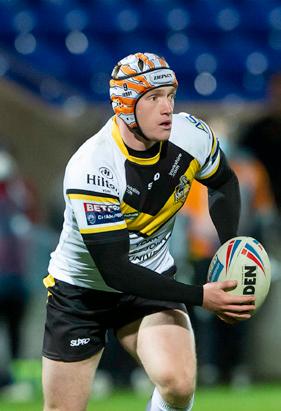
"Such an informative and helpful magazine."
On CCLG's publication 'Supporting your pupil after a cancer diagnosis'
"Answers lots of possible worries in a way that is easy for anyone to understand. The child is now making great improvements as staff are more knowledgeable on how to meet his needs."
“This resource has been invaluable in supporting the school and young child and myself to great success.”
View our award-winning information resources here


CCLG’s research webinars continue to provide valuable insight
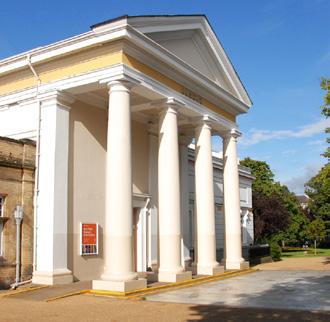
“This session was pitched perfectly for my level of understanding of the subject. It was very well presented, at a good pace and very informative without being full of jargon. Thank you.”
“Understanding more about the research projects and to see the progress in treatment outcomes in the past 30 or so years is very encouraging.”
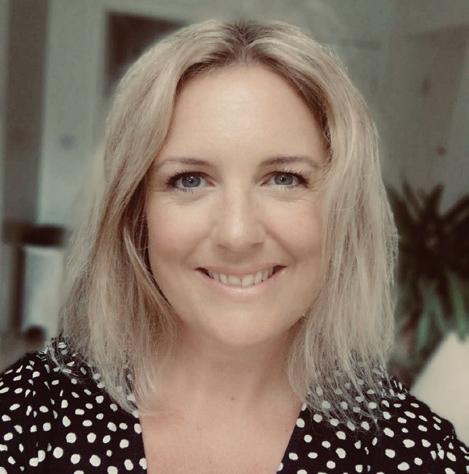
If you would like to SHARE YOUR STORY in Contact or have an idea for a theme for us to cover, please let us know. Email us at editor@cclg.org.uk

Being active has many benefits for all of us but, in particular, for children undergoing cancer treatment. It helps them become healthier and stronger, and also boosts their wellbeing and mood. This is needed for when children are coping with the effects of having cancer treatment and beyond such as fatigue, sleep problems, gaining weight and low energy levels. How can children stay active during and after treatment? This issue delves into the latest thinking behind exercise therapy and gives valuable advice and tips from experts on how to encourage activity at hospital, school and home. It doesn't have to be sports related such as football and gymnastics - fun games and play are just as good. I hope this issue gives you plenty of inspiration on how to help your child keep active.
Claire
editor@cclg.org.uk
It's Childhood Cancer Awareness Month this September. Don't forget to order your Gold Ribbons from the CCLG shop. Visit: shop.cclg.org.uk/
are
To find out more and to book your place, visit: www.cclg.org.uk/our-research/research-discovery-day
MEDICAL ADVISER Dr Ren Manias
Consultant paediatric oncologist at Southampton General Hospital and CCLG member
Children love to move and spend their lives running around parks and playgrounds, climbing, cycling, jumping and dancing. Children don’t see movement as exercise –they’re simply playing and having fun.
But a cancer diagnosis can rob a child of the joy of movement. Feeling tired, unwell and in pain makes children reluctant to be physically active. It can be really hard to be active in a hospital environment, especially when children are inpatients in small rooms attached to drips and monitors. There’s also a natural tendency for parents to want to protect their children when they’re unwell, encouraging them to rest or stay in bed. Families with sick children often become less active, replacing walks and bike rides with scans, tests and hospital appointments.
While this is completely understandable, it can lead to a spiral of inactivity where the less children move, the worse they feel, and the less they then want to move. Inactivity can increase symptoms of illness and side effects of treatment, contributing to muscle weakness and wasting, bone loss, chronic fatigue, low mood and reduced confidence and self-esteem.
Although parents often worry that exercising may not be safe, evidence overwhelmingly points to the benefit of physical activity over risk. It’s good for children’s bodies and minds – it strengthens muscles and bones, builds confidence, reduces anxiety and depression and increases self-esteem and cognitive skills. Exercise also releases endorphins, contributing to feelings of happiness and improved quality of life. There’s persuasive evidence that having a healthy lifestyle and being physically active during and after cancer treatment is associated with better outcomes and improved physical and psychological wellbeing.
It may help to think about movement as fun activities rather than as exercise or another thing on the to-do list - and every little counts. You can be creative when incorporating movement into your child’s day. Even children confined to a hospital room could play an active game on the Wii. Otherwise, think about what your child enjoys and how this could be adapted to their energy levels and circumstances. If you’re worried about risks, talk to your child’s doctor to make sure what they’d like to do is safe, or talk to the ward physiotherapists to get some fun and safe ideas.
Understanding why CAR-T therapy doesn’t work for some lymphoma patients
For children with relapsed large B-cell lymphoma, a type of blood cancer, CAR-T therapy sometimes doesn’t work. This is because the cancer has become resistant to the treatment, meaning the CAR-T therapy no longer kills the cancer cells. Research has found several genes have found several genes are linked to resistant lymphoma and hope their findings can be used to improve CAR-T therapy and create new treatments that target these genes.
Source: Cancer Cell
Predicting kidney failure as a late effect of childhood cancer treatment
US researchers have developed a model that can predict whether a childhood cancer survivor may develop kidney failure later in life. Being able to predict which children are likely to have kidney failure by age 40 would help doctors plan patients’ care - for example, by increasing kidney screenings to ensure any disease is caught early.
Source: Journal of Clinical Oncology
Creativity could help relieve children’s cancer-related anxiety
US researchers have found that creative art therapy might help children cope with cancer-related anxiety. Their study observed two groups of children who were in their first year of cancer treatment - one group was offered creative art therapy, which included activities like drawing, dancing and yoga, while the other group wasn't. The group who received creative art therapy had less anxiety about procedures like blood tests and treatments, but the group without became more anxious as time went on. The research team suggest the therapy is included in clinical practice to improve quality of life while on treatment.
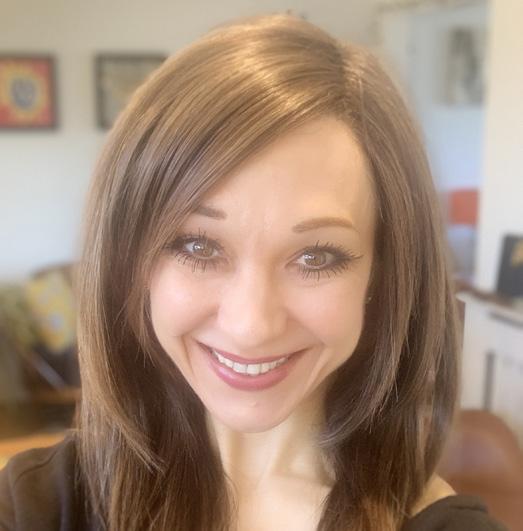
Source: Cancer Nursing
Dr Martin English receives prestigious Award
We were thrilled to recognise the incredible contribution to Contact of our recently-retired Medical Adviser, Dr Martin English, at CCLG's Member Awards ceremony in March 2023.
Dr English, Medical Adviser since Contact began 24 years ago, scooped the Johann Visser Award for Outstanding Contribution to CCLG's work. We wish him all the best in his retirement and express our deepest gratitude for all his hard work, support and advice over the years.
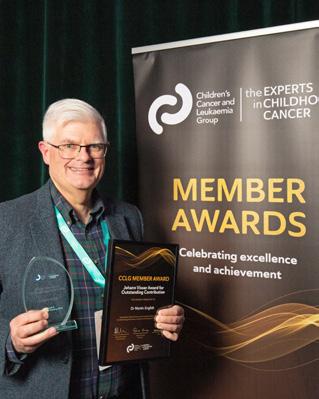
Physical activity: What to consider and what is happening to support children with cancer
Debbi Rowley (left) and Lucy Waller (right) are physiotherapists at Sheffield Children’s Foundation Trust and Great Ormond Street Hospital, respectively. Here, they offer advice on things to consider before starting physical activity and tell us about some of the initiatives happening across the UK to help children with cancer move more.
Physical activity is any activity that involves moving your body. It can mean many different things and includes:
everyday activities e.g., walking to school, climbing the stairs, walking the dog
physically active play e.g., riding a bike, scooting, playing 'hide-and-seek', soft play sessions, tummy time for babies
organised sports and exercise e.g., football, swimming

It’s important to try and do a combination of aerobic activities (ones that make you a little bit out of breath/ sweaty) as well as activities that improve strength and coordination. There is lots of advice available regarding how much physical activity children and young people should do, but the main message is: "be still less and move more".
Is it safe and are there things I shouldn't do?
It’s always important to check with one of your child’s healthcare team before starting something new as there may be precautions to take – for example, if your child has a central line inserted to deliver chemotherapy and/or they are on chemotherapy treatment which can affect blood counts. It’s important to remember, however, that the research is showing us that it's safe and beneficial to be active through cancer treatment and once it has finished, if you follow the precautions specific to you.
What should I do next?
Think about what your child enjoys doing. It’s important that they do something they like and are therefore more likely to continue with. Try to build it into their daily routine. Start by doing a little bit and then build it up over the coming weeks and months – little and often will allow you to work out how much they can manage to start with. It may be a good idea to set them some goals – but make them personal and, importantly, achievable.
What’s happening to support children and young people with cancer in the UK to become more physically active?

Children’s cancer centres across the UK understand the importance of being physically active for children and young people having cancer treatment. You may have noticed that your child’s healthcare team are talking to you more about being active and how you can do this. Some centres have started offering individualised programmes for children and young people following a cancer diagnosis and some are putting on activity days where you can go and try out new activities.
How can I find out more?
Your child’s healthcare team will be able to give you the specific advice you need, but there are also lots of resources available to you online which can give you more ideas, such as:
Moving Medicine: bit.ly/3mIJAAw
UK Chief Medical Officer’s physical activity guidelines: bit.ly/3MSiguu
CCLG's 'Keeping your child active' publication: www.cclg.uk/3Uxwdji
We’re also working closely with charity organisations to help support children to be physically active, such as Cyclists Fighting Cancer, the Ellen MacArthur Cancer Trust and Move Charity. We’re also helping to support health and fitness professionals with training so that they can discuss and support physical activity and exercise specifically for children and young people with cancer.
Across the country, we’re also undertaking research projects to better understand what interventions work best for children and young people with cancer to enable them to be physically active at different stages of their care pathway.
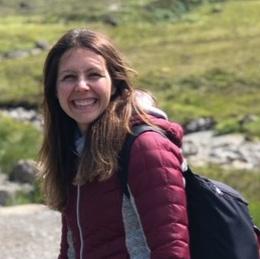
How my cancer journey fuelled my strength and determination to succeed in sport
Jake Heasman was diagnosed with a brain tumour when he was two years old, leaving him visually impaired. He tells us how his experiences of cancer helped drive him on to sporting success.
My name is Jake, and I’m 18 years old. I currently play for England’s partially sighted senior futsal squad and can honestly say that I’ve been able to transfer some of the lessons that I’ve learnt from undergoing cancer treatment twice over to my daily and sporting life. In an odd sort of way, sports and treatment plans share a few similarities. As I’ve found out, you experience positive and negative periods, times that are undoubtedly hard, but despite the challenging situations you may find yourself in, there’s always someone who’s there to lend you some encouragement and support to help you through.

At two years old, I had two convulsions (seizures) and after an MRI scan, it was found that I had a brain tumour that was growing in size and would affect my vision for the rest of my life. Shortly after my diagnosis, I underwent a year’s worth of chemotherapy to try and prevent the tumour from growing even more. Fortunately, at the end of the year-long chemotherapy cycle, the tumour had stopped growing to the level that consultants wanted.
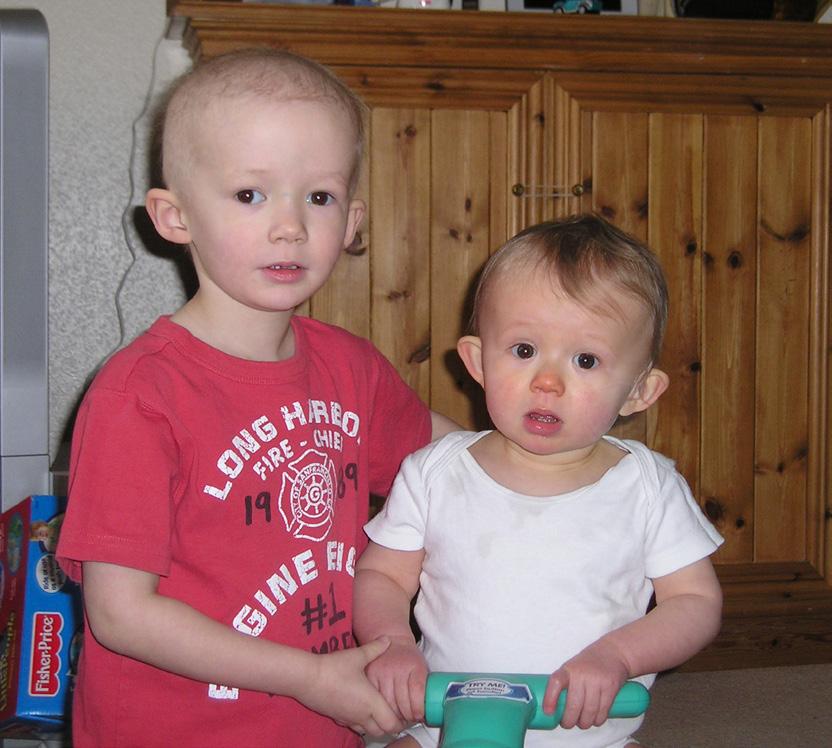
Like a lot of young children around the world, I loved football and would try not to let my sight prevent me from taking part, perhaps finding a link of resilience between playing football and the level of emotional strength involved in going
through treatment. Sport and treatment periods can both be like a rollercoaster, with some occasional positive news providing motivation to continue during the toughest moments.
Trying my hand at futsal
My love of football continued throughout this tough period and a new opportunity came my way. Through the Blatchington Court Trust, a charity for the partially sighted, I saw an advert for a Brighton and Hove Albion talent centre for those who are partially sighted, deaf or have cerebral palsy playing futsal.
Futsal was a game I’d never heard of but instantly fell in love with due to the court being smaller, meaning I could see the full length of the playing surface.
At the age of seven, consultants found that the tumour had started to grow once again, and this led to another 18 months of chemotherapy. This time, being slightly older, I was able to understand what was happening. I tried my best to develop a positive mindset, alongside my family who were always there to support me, and motivate myself to get through treatment as best as I could. Again, I was lucky that I was able to complete treatment with a reduced tumour size and have had a lack of growth since.
Jake holding his England international futsal shirt"You experience positive and negative periods, times that are undoubtedly hard, but despite the challenging situations you may find yourself in, there’s always someone who’s there to lend you some encouragement."Jake as a young boy with his sister Lauren
This was perfect for me as I’d started to become frustrated with grassroots football as the game started to expand to 11-a-side and the pitch was becoming too big for me to see everything that was going on.
The centre was the start of a potential pathway to play for an England senior squad and was a chance that I simply couldn’t turn down. It seemed to be the perfect fit and I was then fortunate to progress through to the Regional Emerging Talent Pathway and, six months later, into the National Emerging Talent Pathway. This is where young partially sighted, deaf and cerebral palsy players from across the country come together and try to show the England coaches they can perform at the highest level in the future.
I’d be lying if I claimed that I had no struggles at these camps, both physically and psychologically. But, through a huge amount of support from my family and coaches, I carried on harnessing the mental toughness I’d developed through my treatment.
However, my determination was really tested when COVID-19 hit and brought with it what seemed like an endless wait
for more opportunities to prove myself. Subconsciously, I think that I drew upon the resilience I’d developed from the various treatments I’d been through to keep training and one day prove to myself that I was able to achieve anything if I broke into the senior squad.
Eventually, a chance presented itself where the senior and newlycreated development squad I was part of merged for a camp. I tried to perform to the best of my ability and once again, the determination I had inside of me, strengthened by knowing I’d come through two sets of cancer treatment, helped me in being selected to continue training with the senior squad.
An England international
In June 2022, I was selected to make my international debut against Spain – and, even in my first game for England, I had to draw upon large amounts of courage after misplacing my first pass! At the end of the competition, I was extremely fortunate to win players’ player of the tournament. In November, I was selected again, this time to play against Turkey,
and although I suffered my first major injury in the process, it meant I’d now won six senior England caps, something I’m incredibly proud of.
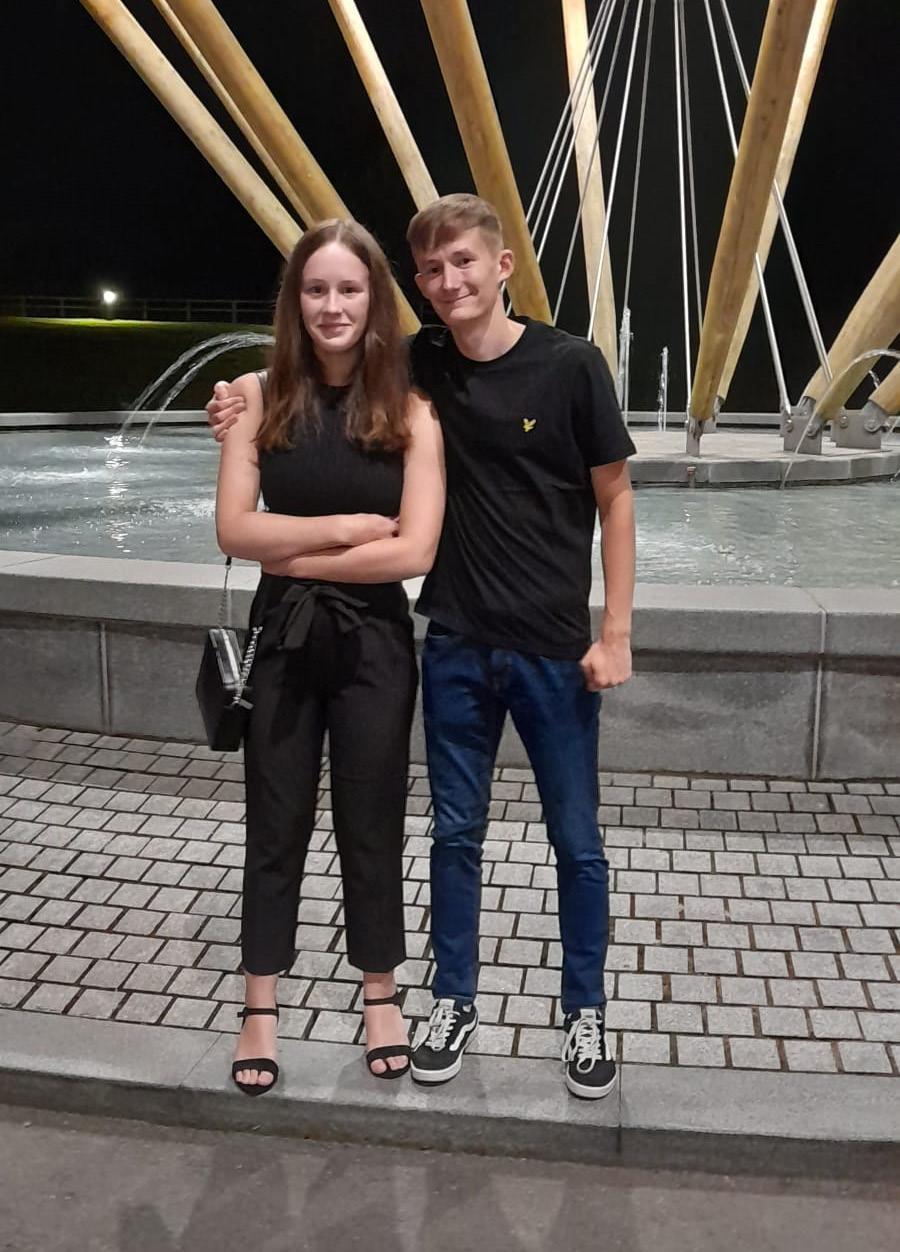
So, did I ever expect to achieve any of this 16 years ago? Absolutely not! But if there’s one thing that my journey has taught me, it is no matter how uncomfortable the situation, it will only make you a stronger person.
p Jake before his first appearance for the senior England partially sighted team in Spain in July 2022
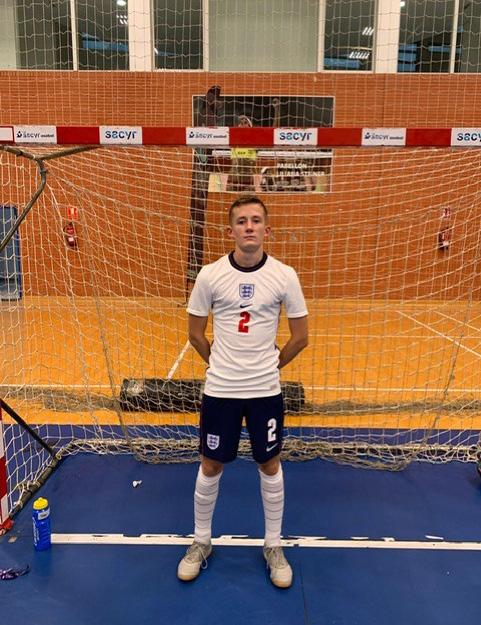 p Jake and Lauren
p Jake and Lauren
Exercise pathways in paediatric oncology, from hospital to school

Dr Peter Wright, Hayley Marriott and Dr Alba Solera-Sanchez, researchers at Oxford Brookes University, explain the benefits of staying physically active during and after treatment and explore how we can work collaboratively to improve physical activity pathways and support for children and young people.
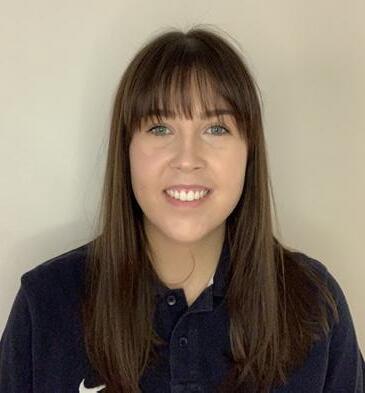
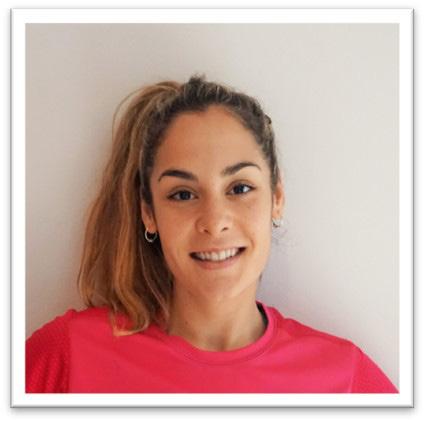
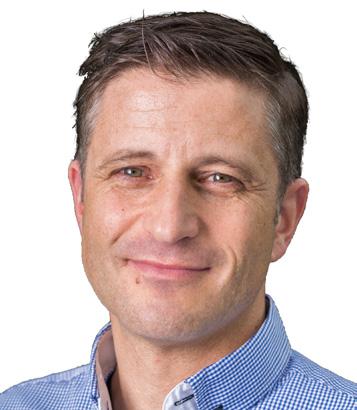
Did you know that in the past, patients were generally advised to rest and reduce physical activity levels when undergoing cancer treatment? However, it was found that lengthy periods of inactivity had negative effects on people's physical and mental health. In 1999, the first research study that showed a positive association between physical activity and health benefits in adolescents with cancer was published. Since then, several studies have found that being physically active both during and after cancer treatment has many benefits for children and young people, such as helping manage side effects like fatigue and pain and enhancing physical fitness and psychological wellbeing.
While we now understand much more about how physical activity and exercise can help young patients, research has shown that physical activity levels are almost always reduced during treatment. For many children and young people, this reduction in physical activity can be seen for years after treatment finishes.
Why does this happen?
It’s thought that this change in physical activity can be associated with treatment
side effects, hospital stays, over protection and fear. As the benefits of physical activity were not recognised in childhood cancer patients until the early 2000s, exercise support and provisions for patients haven’t historically been well integrated into healthcare and society. However, some amazing work and research is now being conducted in the UK and overseas to provide better exercise recommendations and pathways for children and young people during and after treatment.
In other countries, such as Germany and Norway, exercise therapy is commonly offered to young people with cancer as part of their healthcare provision. Physiotherapists and exercise therapists work together to support young people to be more active, both during and after treatment. Some hospitals even have climbing walls, gyms and swimming pools to use during and after treatment.
Some countries also have rehabilitation hospitals where young people are supported by different specialists including physiotherapists, exercise specialists, psychologists, dietitians and teachers. During stays, patients get to try out lots of different activities and adapted equipment that helps make getting active more accessible.
Being physically active both during and after cancer treatment has many benefits for children and young people, such as helping manage side effects like fatigue and pain and enhancing physical fitness and psychological wellbeing.
Being physically active from hospital to school
Encouraging physical activity across all stages of treatment and different settings is essential to creating a sustainable and effective pathway for young people. That’s why the inclusion of patients, families, healthcare and exercise professionals, teachers and coaches in active conversations and initiatives is paramount to supporting young people to become more active in hospital, at home, in clubs and at school.
Top tips for patients and families
Increasing physical activity levels can sometimes be challenging while having treatment. Nevertheless, there are different ways to increase physical activity, whether this is at home, in hospital, or at school. For instance, why not explore how technology could help you exercise? Did you know that there are some great apps that track your daily steps? Trying to set goals can help to increase physical activity levels and there are fun apps that will help with movement, such as Active Arcade and Pokemon Go.
Activity days are a great way to explore the benefits of physical activity and try out lots of different sports and activities. Check out events such as ‘Do it For You’ at Sheffield Children’s Hospital, ‘Get Active’ at Great Ormond Street Hospital and ‘Let’s Move’ at Oxford Brookes University, which are all organised for children and young people affected by cancer.
Attending these events allows you to explore several ways to be active as well as learn how you could adapt physical activity to suit your individual needs. This can be a great way to build confidence and learn new skills, as well as a great opportunity to meet other families and share experiences.
Charities also play a fundamental role in supporting children and young people with cancer. They may organise events, offer individualised exercise programmes or provide equipment to support young people’s involvement in sport and physical activity.
Top tips for professionals

As well as physiotherapists and exercise professionals, consultants, nurses, play therapists, teachers and coaches also play a crucial role in supporting children and young adults to move more. The Faculty of Sport and Exercise Medicine UK developed an online resource called ‘Moving Medicine’ to help healthcare professionals integrate physical activity conversations into routine clinical care as well as provide information and activities to patients and families. For anybody that is interested in knowing more about the effects of physical activity for different conditions, the online ‘evidence finder’ summarises key findings and research papers. More information can be found at www.movingmedicine.ac.uk.
Creating a sustainable exercise pathway
While some amazing work and research is being conducted in this area, it’s important to continue to improve physical activity pathways across all stages of treatment and settings. A multidisciplinary and collaborative approach is needed to create a culture where we support children and young people to move more during treatment and beyond.
To establish and improve physical activity pathways, we recommend:
empowering the active involvement of children, young people and their families
increasing knowledge exchange and collaboration between organisations and professionals
ensuring adequate communication of evidence and guidelines
creating specific educational programmes for healthcare professionals, teachers and coaches
developing exercise-friendly settings, within clinical environments, school and the community
the integration of evidence-based exercise interventions, within clinical and community settings
Get Strong to Fight Childhood Cancer
The FORTEe study 'Get Strong to Fight Childhood Cancer' is an international research project that brings together 16 institutions from eight European countries. FORTEe is one of the world's largest studies in paediatric exercise oncology, receiving funding from the European Union's Horizon 2020 Research and Innovation Grant. The study aims to investigate the effect of an individualised exercise programme and adapted digital health technologies, in children and young people aged between four and 21 years old who are undergoing intensive cancer treatment. The goal of the research is to implement paediatric exercise oncology as an evidence-based standard in clinical care for all childhood cancer patients across Europe and beyond.
never ceases to amaze us with her tenacity and dynamism”
Madeleine, now seven, has always been a very active child, with a special love for gymnastics. She began training aged two, following in the footsteps of her siblings, Eddie, Louise and Heidi.
In late 2019, she’d been complaining of pain in her coccyx after a fall on her bike. After three separate trips to the GP, my husband Scott and I had been assured her pain was due to night terrors and the bruise on her bottom ‘was nothing to worry about’.
However, continued distress and a refusal to even put on her leotard or participate in classes prompted us to take her to the emergency GP, who referred us to the children’s assessment unit at Royal Stoke Hospital. Still convinced she’d broken her coccyx, we were stunned when we were referred to the doctor for ‘lumps and bumps’, and subsequent scans revealed a grapefruit-sized tumour.
Three weeks after her fourth birthday, Madeleine was officially diagnosed with a stage 4 germ cell tumour, which had spread to her lungs. We were shocked and paralysed with fear hearing this news, and the array of emotions and questions we had were overwhelming. We asked ourselves if we’d ever see our daughter grow up, attend school or even compete in gymnastics competitions.
After we met our amazing oncologist at Birmingham, Dr David Hobin, who told us the tumour was treatable, Madeleine had a central line fitted and embarked on the first of six cycles of chemotherapy. We wanted life to be as normal as possible for her during this time and she was adamant she wanted to continue with her gymnastics, where appropriate. In discussion with her fabulous oncology team, we continued to take her to classes on the condition we were mindful of her ‘wigglies’ (central line) and observed exceptional infection control.
providing a bar and beam for her to train at home, Madeleine attended virtual gym and conditioning sessions throughout lockdown, even moving up groups!
Once chemo was complete in April 2020, Madeleine had surgery to remove the residual mass and her coccyx. Just three weeks after surgery and recuperation, she competed in an online club competition!
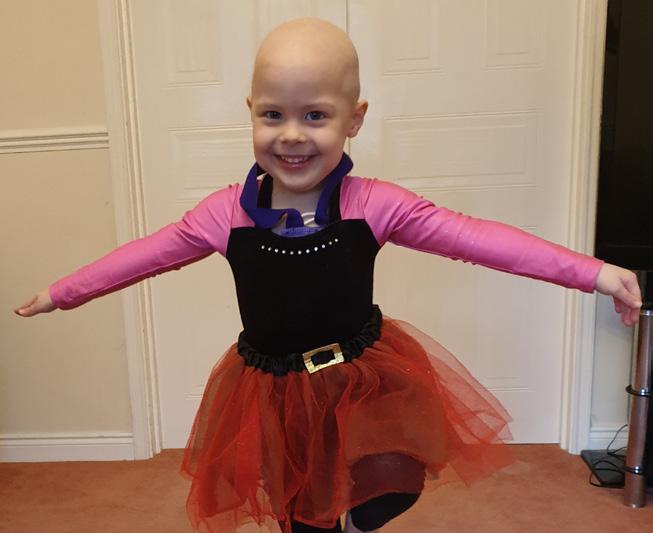
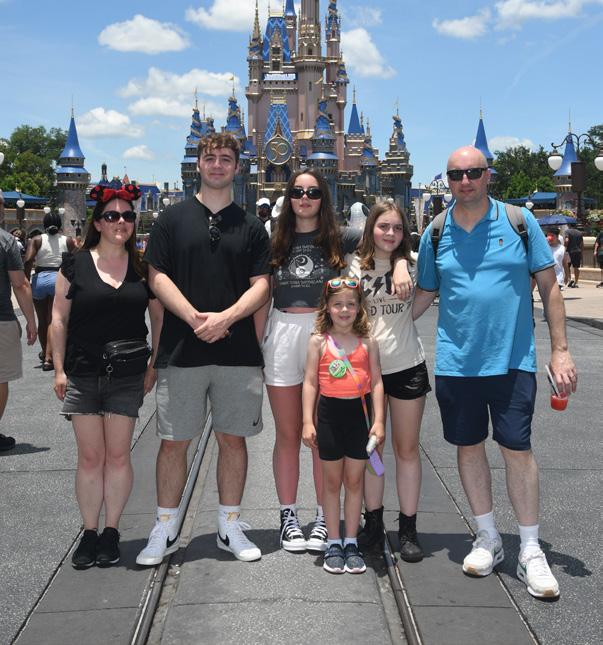
Gymnastics has given her enormous strength during her journey, in terms of both fitness and support. Her coaches and teammates have been a pillar of strength, as have the wider gymnastics community, who follow and encourage her on Instagram.
She’s just celebrated three years remission, and competed in her first regional competition, where she was awarded team silver in the under 9s advanced girls category.
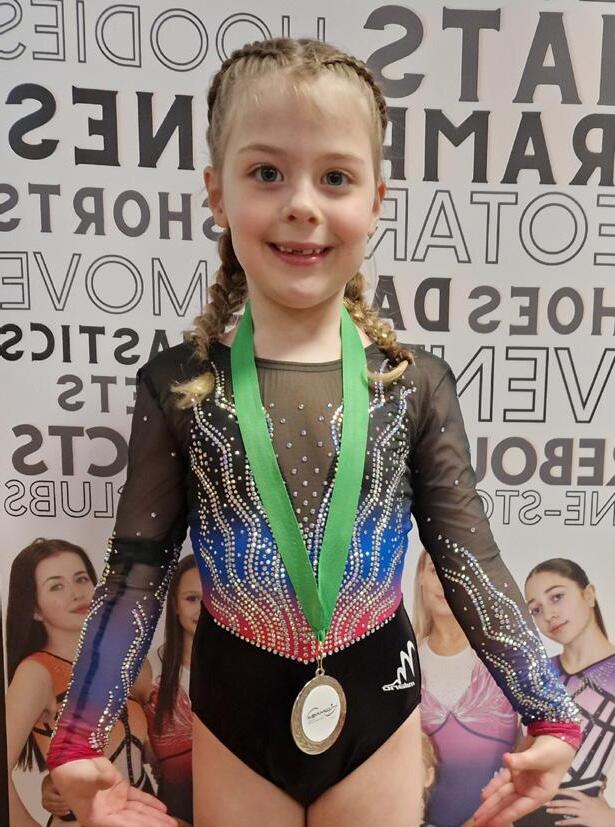
Madeleine is hopeful her gymnastics will continue for many years. She’s recently added a back flip and front handspring to her repertoire of skills and never ceases to amaze her medical team with her tenacity and dynamism in the gym!
Madeleine attended when she could, even attempting new and more difficult skills, and was so determined to keep her fitness up. Undoubtedly, exercise not only helped her physical strength, but also her appetite. Her weekly weigh-ins showed her gaining weight, meaning interventions such as an NG feeding tube weren’t necessary. Meanwhile, her gym club rallied around her, with owner Adele Booth organising a fundraiser for Madeleine to go on a family holiday to Florida. They held a Valentine’s ball for her, where she lit up the room with her moves!
Midway through treatment, COVID-19 struck, with all classes suspended. Social distancing became something everyone was subject to, not just oncology families. But, thanks to the charity Molly Ollys Wishes

“She
Emma Cooper’s daughter Madeleine was diagnosed with a germ cell tumour aged four. She tells us how Madeleine’s love for gymnastics helped her both physically and mentally during treatment.
Madeleine and familyMadeleine in hospital
Pioneering PE project helps normalise movement while in hospital
Brainbow is a specialist rehabilitation service for children with brain tumours based at Addenbrooke’s Hospital in Cambridge. Becca Knowles, specialist paediatric physiotherapist, tells us about its pilot project employing a PE teacher within its hospital school.
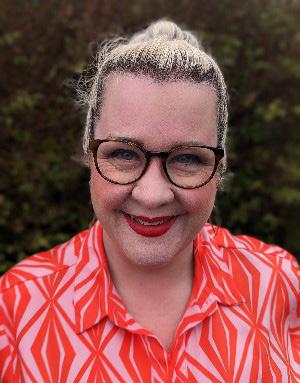
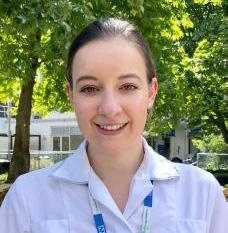

The importance of physical activity is well documented in short and longerterm outcomes for children undergoing treatment for cancer. Unfortunately, children are often less active when they are an inpatient undergoing treatment. Significantly, a reduction in physical activity not only negatively impacts cardiovascular health, bone health, mental health and more, but children also miss valuable opportunities to develop their motor skills. Many hospitals have a school facility onsite, ensuring children have access to key areas of the curriculum. The challenges, however, of incorporating PE into the curriculum in a hospital school setting often results in a real missed opportunity for these children to optimise their development. Movement can become very medicalised in hospital. At Addenbrooke’s Hospital, we recognise the value in normalising movement, and providing children with the opportunity to develop their motor skills, such as hand-eye coordination, balance and agility, in addition to working on more
Nadine Gooding-Hébert, Headteacher at Pilgrim Pathways School, said:
"While working as a teacher on the wards, I experienced the transformative power of PE in engaging unwell and reluctant learners, and that’s why we’ve partnered first with KICK to deliver this highly bespoke offer.”
individualised and specific movement needs within physiotherapy. We’re thrilled to have joined a partnership initiated by the Pilgrim Pathways School, our hospital school, the ward physiotherapy team, Brainbow and the charity KICK, to integrate PE into our school curriculum.
The response and uptake from patients, parents and staff has been a resounding success! PE can be adapted to children of all needs, whether they require assistance with moving, sitting up, or if they are independent with their mobility. One of my personal highlights of bringing PE into the children’s cancer ward has been seeing the power of normalising movement, and ensuring these children have access to all of the opportunities they would have if they were not undergoing treatment. And, of course, them experiencing the laughter, enjoyment and enthusiasm towards movement and being active.
Following the end of treatment, integrating back into physical activities can be challenging for children who have
undergone treatment for cancer. Fatigue, reduced muscle strength and endurance and reduced cardiovascular fitness all contribute to this. Fundamentally, by taking away their opportunity to engage in a variety of physical activities, limiting their access to ‘normal activities’, and removing them from PE, will have a detrimental impact on their physical abilities, and their integration back into both social and physical activities, as well as a non-medicalised society.
This project has demonstrated the power and value in the collaboration of health and education within a hospital setting, and for children undergoing treatment for cancer. Working in partnership to offer opportunities to normalise movement and facilitate optimal growth and development, despite often long inpatient stays, will provide both short- and longer-term benefits to the mental and physical health of our patients. We hope that PE will soon be available across all our children’s wards.
Zoe Cross, PE Coach, KICK, said:
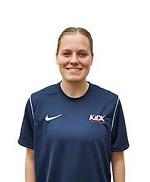
Nadine
“It’s amazing to see the positive impact 15 minutes of physical activity has on these young people, and witnessing their mood improve and their abilities increase has been a wonderful experience." Zoe
Surviving and thriving with exercise therapy
Saskia Wells was diagnosed with a brain tumour, aged 16. Now 18, she tells us about being one of the first patients in the UK to receive one-to-one exercise therapy support through the Active Hospitals project, funded by Public Health England and Sport England, at Sheffield Children’s Hospital.
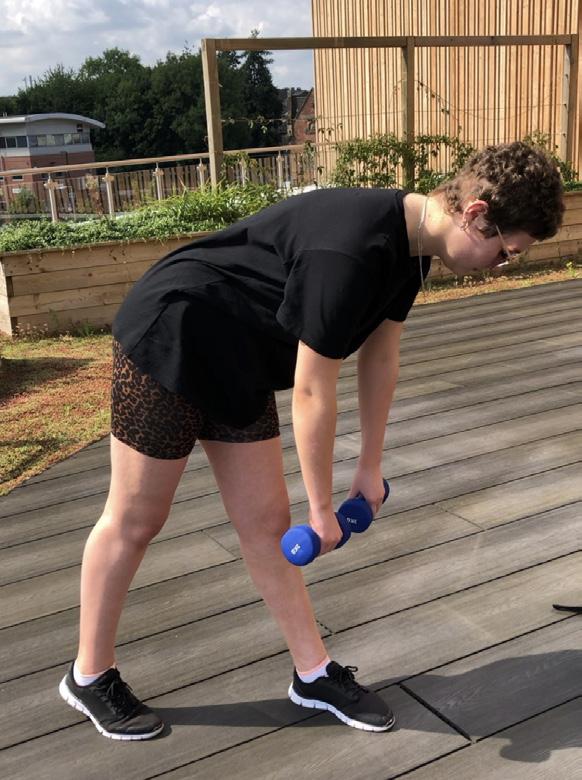
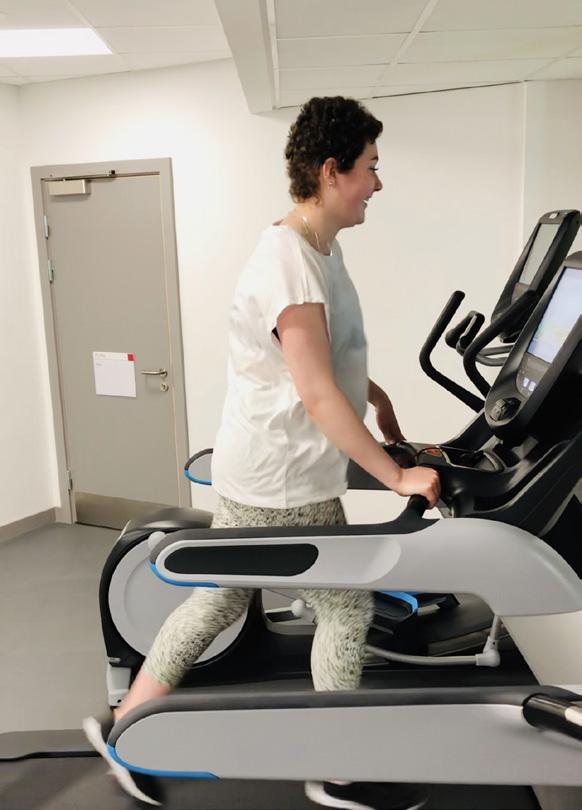
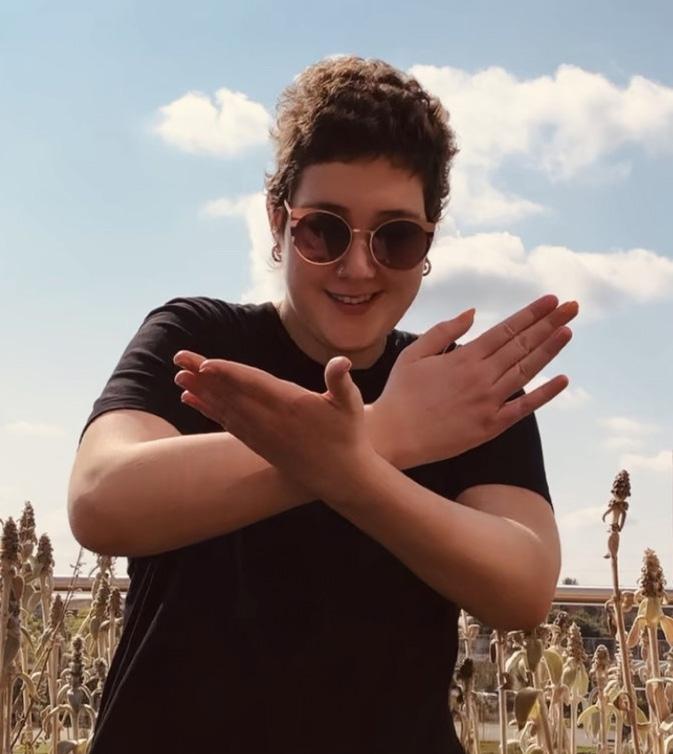
When I was 16, I was diagnosed with medulloblastoma, a brain tumour. I chose to take part in an international clinical trial – known as PNET 5 – at Sheffield and was treated with both chemotherapy and proton therapy.
The chemotherapy for this type of tumour is particularly difficult for teenagers due to the side effects which can happen. Because of this, I worked closely with physiotherapists during my treatment but felt I needed continued rehabilitation at the end of it because my muscles had lost strength and tone.
I’d received specific rehabilitation from the physio and occupational therapy team after my chemotherapy, but it was felt that having active sessions would help me reach some of my personal, everyday goals. This meant that as part of my recovery at Sheffield, I took part in the new Active Hospitals project.
At the end of my treatment, I was in a wheelchair and struggling to do day-to-day tasks. But I worked really hard and with guidance from Tom Fletcher, my exercise therapist, I’m now doing really well and have even moved on to taking part in workouts with weights.
When I was first introduced to Tom, I’d only recently started to walk short distances and stand up and maintain my body weight. We talked about some of my fears and concerns, such as being worried that I’d never be able to walk properly again and how I felt low because I wasn’t able to be my normal, outgoing self. After this initial chat, Tom and I agreed on several longterm goals for me to work towards. These included being able to independently shower, go to - and be able to dance at - a concert, and to be able to run again.
I must admit that, to begin with, I didn’t have much confidence that exercise therapy would help me achieve these goals and improve my quality of life, but the programme really helped me in my recovery and in getting back to being me, both physically and mentally. I think it exceeded my expectations, both for myself and for what the programme was going to be. I didn’t think I’d get to this point. I’ve got so much more independence back now, from being in a wheelchair to now is such a huge difference. I’m so much better now and attending full-time college and living life to the fullest! I can’t recommend the programme enough and think it would be great to see exercise therapists in all hospitals in future.
Tom said: “Through Active Hospitals, Sheffield Children’s is making physical activity a key part of recovery plans for children and young people, whilst also offering more resources to support staff, patients, and their families. It’s important for patients to be given the opportunity to become physically active. This is because during treatment, they generally have lower physical activity levels than their peers and being physically active in the long term may help to counterbalance some of the effects of their cancer and treatment.”
Empowering children and young people to move again after a cancer diagnosis
Supershoes is a national charity that helps children and young people become active again after a cancer diagnosis. Its founder and CEO, Sarah White, tells us how it provides young patients with a pair of specially crafted shoes designed to encourage them to move.
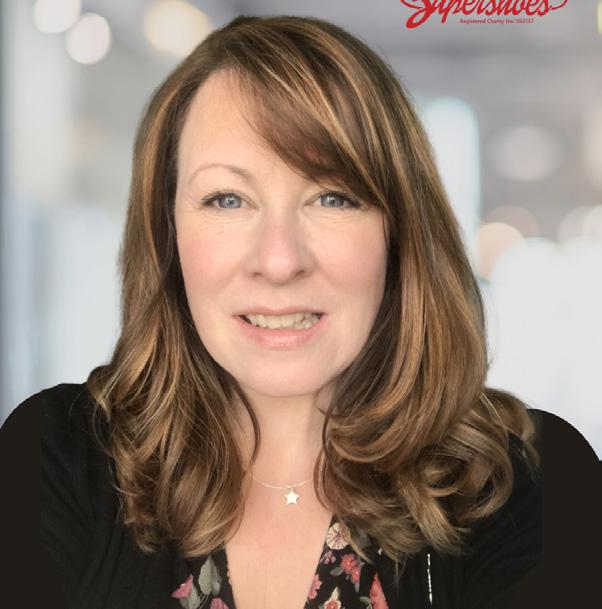
Cancer treatment takes its toll on children, both physically and mentally, often leaving them too poorly to take part in normal everyday activities, such as going to school and playing or hanging out with their friends. A change in appearance and lack of peer group interaction can cause a loss of self-confidence.
Energy levels start to fall, and from the point of diagnosis, the child or young person spends a lot of time on their hospital bed, or lying on the settee at home as they recover. The whole family tends to be less active while they support the young person through their treatment. Inactivity becomes the norm, and general health suffers as a result.
However, staying active is now recognised as a vitally important part of recovery, and Supershoes helps with a unique approach to walking-based wellbeing. It’s a simple, but extremely effective way to enhance both physical and mental wellbeing and encourage mobility during the harsh, debilitating cancer treatments that are faced by hundreds of youngsters each year.
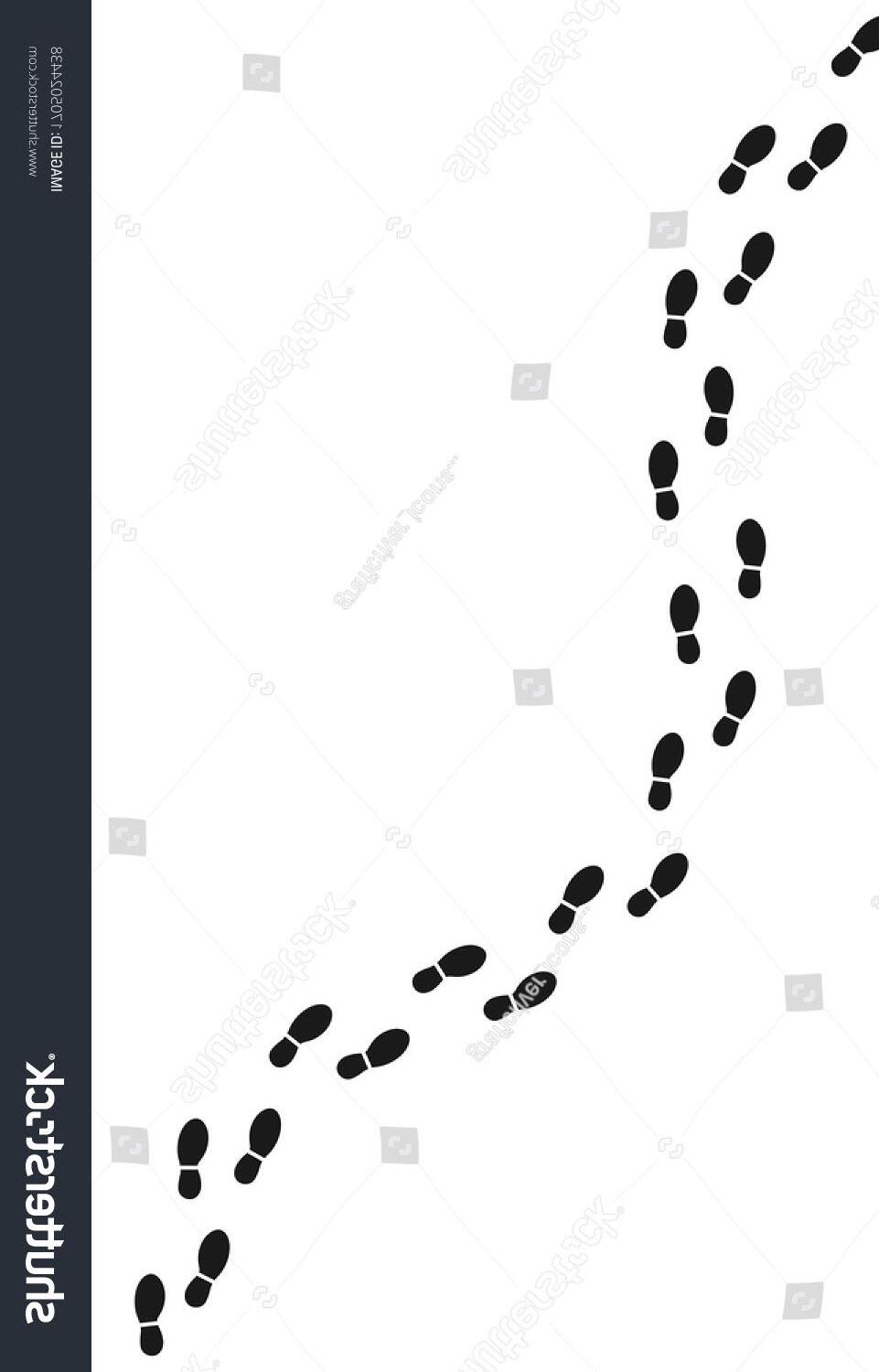

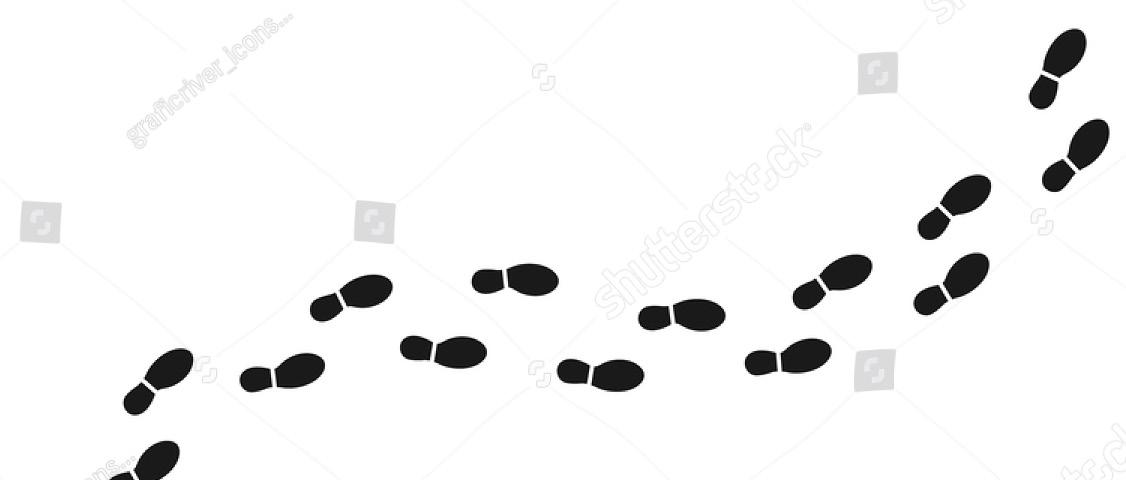
Since our inception in 2013, we have sent out over 6000 pairs to children and young people aged 0-24. Those given the gift of Supershoes often find themselves not just walking, but hopping, skipping and jumping as a result of their superpowers!
How are Supershoes created?
We work alongside Young Lives vs Cancer, whose support workers refer children directly to us. With each referral, of which there can be up to 30 a week, comes a list of a child’s favourite things, such as sports, TV programmes, pets, hobbies, or other interests. And then, the magic begins.
A pair of plain, white Converse trainers is dispatched to one of 250 ‘Super Artists’, who volunteer their time and talents for free. They set about creating a custom-painted pair of Supershoes as unique as the child who will receive them.
Our impact
We know from what parents tell us, that children receiving a pair of Supershoes want to get up and about to show them
Supershoes arrived, and he was so excited he enjoyed jumping around on the sofa like a Superhero before taking them for an outing to the park!" Find
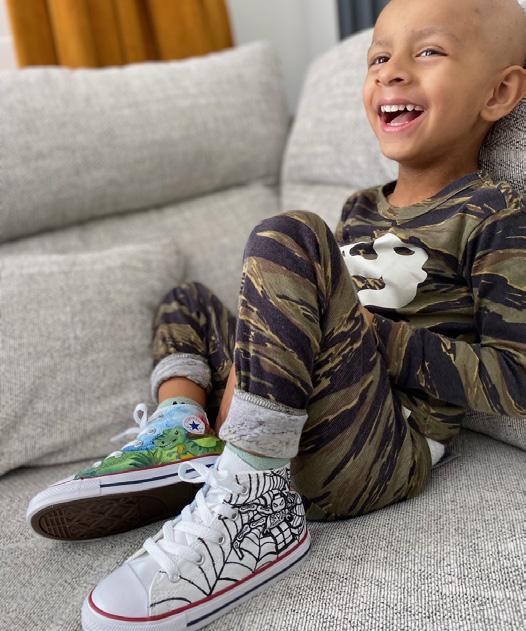
off. They often have an immediate positive effect on their mobility, as they become motivated to walk about, or even run and jump again, sometimes after a period of immobility. Some wear them to their treatment sessions, because they believe they give them 'superpowers', whereas for other patients, they’re a talking point, helping them explain and articulate their feelings to others about what they’re going through. A pair of Supershoes represents who they are –above and beyond their treatment. With so many referrals received each week, our work is certainly fullon. But we won’t stop. We’ll carry on bringing smiles for as long as there are youngsters in treatment for cancer.
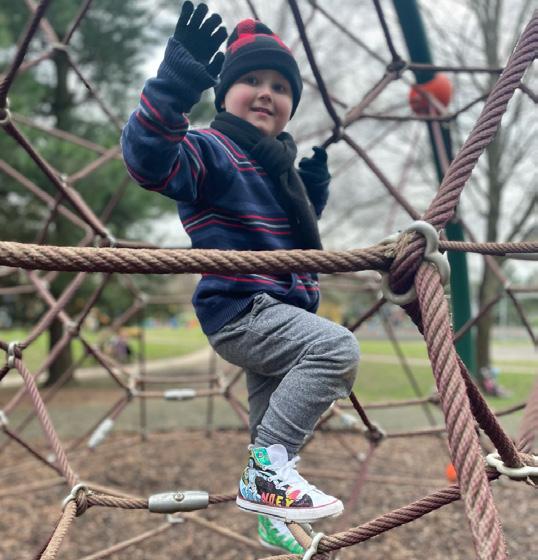
"Because they are Supershoes, Noah can run really fast and jump really high in them! They’ve brightened what can be some not so bright times."
"Zahi’s
Helping young cancer patients ride their way back to physical fitness
Cyclists Fighting Cancer (CFC) supports children and young people living with and beyond cancer in the UK by giving them new, lightweight bikes, specially adapted trikes and cycling equipment. Liz Pharoah , CFC trustee and cancer exercise specialist, tells us more.

A bike or trike is a way of being physically active that is fun, sociable and has a low impact on bones and joints. Being out and about allows the rider to build stamina, muscle strength and endurance, and improve balance and coordination all while having fun. This is especially important as childhood cancer treatments can have detrimental impacts on the mental and physical health of a child.
Providing a bike or trike to a child has been reported by parents to bring:
• 93% improvement in mood
• 89% increase in confidence
• 81% boost in self-esteem
• 95% increased strength
• 79% better balance
• 88% improved stamina
• 75% enhanced coordination
Max
We recognise that often cycling is a sociable activity and having another family member with a bike will encourage more physical activity for the child affected by cancer, so we also provide bikes for other family members, such as siblings. In fact, 94% of parents reported an increase in the amount of time spent active outside with a sibling after receiving a CFC bike. Being a trustee for CFC is such a rewarding role. Nothing quite beats seeing the smiles on children’s faces (and parents!) when they ride a bike for the first time since diagnosis and the sense of achievement in taking part in this ‘normal’ activity. It’s great to know that the charity has played a part in making those smiles and having already helped over 8,500 families since 2005, we can’t wait to see many more smiles from proud new bike or trike owners.
Emma
Seven-year-old Max has several disabilities as a result of a rare form of metastatic ependymoma. He received his specially adapted trike and trailer in 2021. Eighteen months later, Max is now pedalling and steering independently and is a member of a cycling club, attending with a friend from school. His mum said: “Having this trike has brought normality to our lives. Max can bike like any other child can and our family can go out together for bike rides. The joy and memories the trike has brought us are truly priceless.”
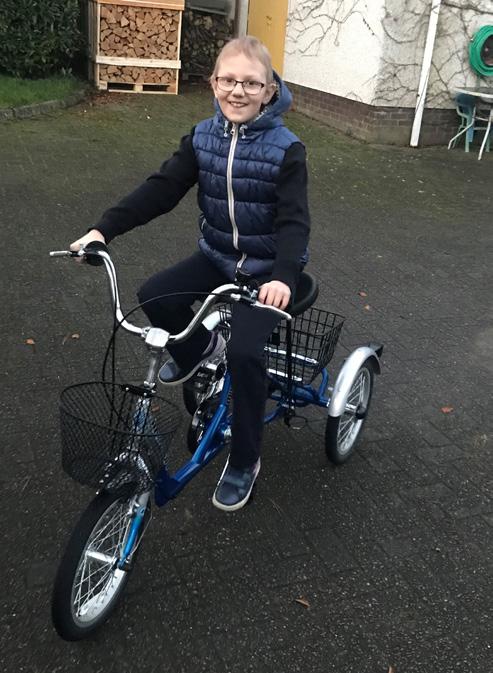
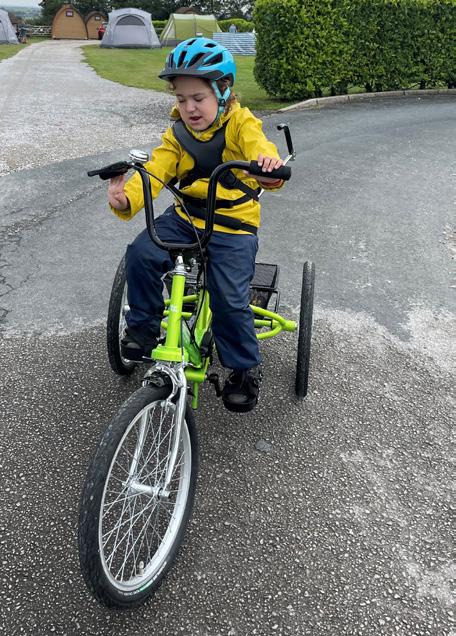
Mollie
Nine-year-old Emma was diagnosed with metastatic Ewing sarcoma in her right femur which is now severely damaged. She has reduced flexibility in her right knee and is no longer able to run, jump or do anything that would result in a strong impact on her legs.
Her mum said: “Our physiotherapist mentioned she could see her leg muscles are not wasting as quickly/strengthening and she even puts her feet down a bit flatter. What a difference the trike has made already to Emma!”
Mollie was diagnosed, aged three, with parameningeal rhabdomyosarcoma behind her left eye, causing her to lose sight in it. As she learnt to cycle, she lacked confidence, was very anxious and didn’t enjoy it, saying her bike felt “wobbly”. However, as soon as she got on her new bike, she became so much more confident, cycling two-and-a-half miles!
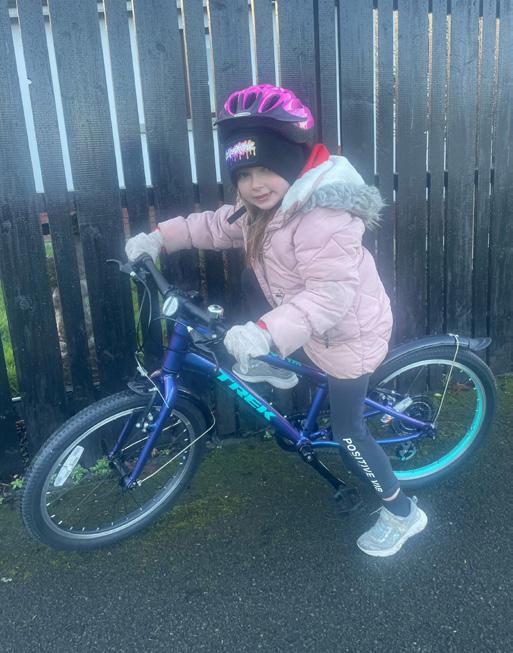
Her mum said: “The correct bike has really made a huge difference for Mollie, and it also reflects that cancer isn’t over once chemo stops. Late effects impact kids’ lives in many ways and CFC recognises this and helps children be children despite their diagnosis.”
To find out more visit www.cyclistsfc.org.uk or email info@cyclistsfc.org.uk
A parent’s view...
Keeping children active
Kat Earley's son Cohen was diagnosed with rhabdomyosarcoma, aged four. She writes about how staying active wherever possible played a crucial role in his wellbeing both during and after treatment.
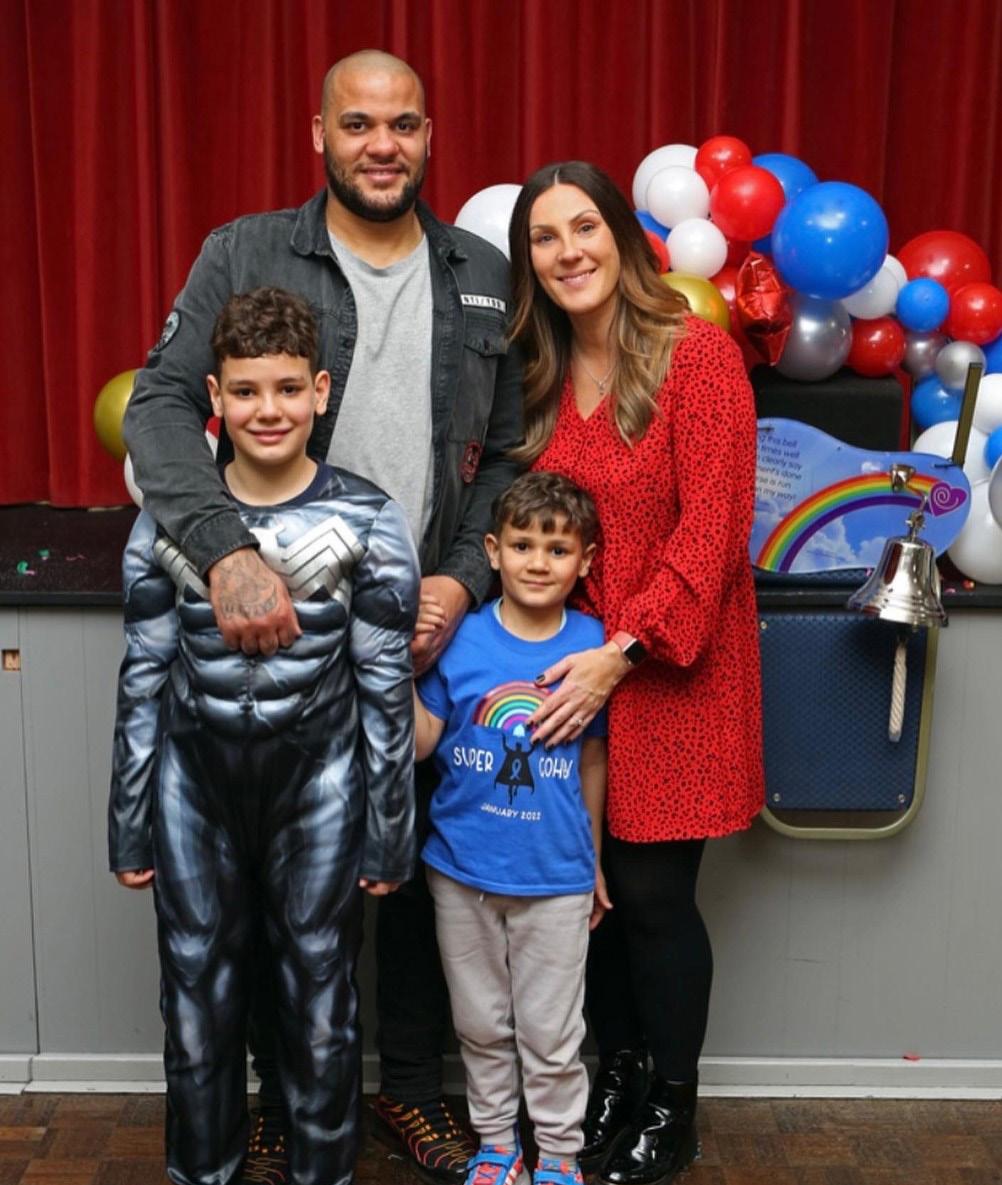
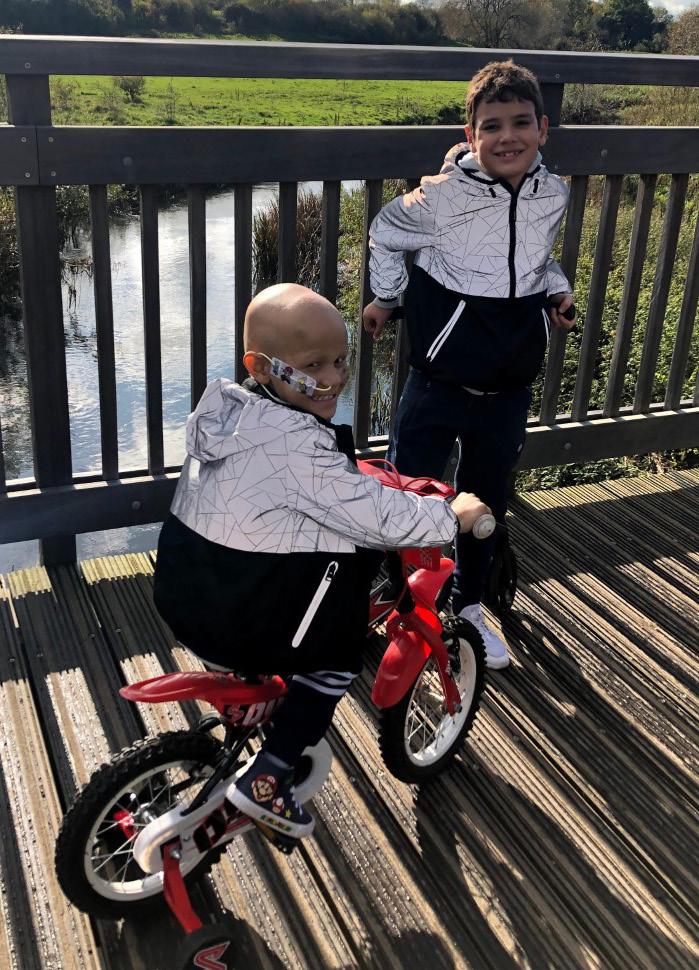
In May 2020, my funny, loving, energetic, beautiful boy Cohen was diagnosed with stage four rhabdomyosarcoma. Before his diagnosis, Cohen was always jumping from anything he could climb on to. He could never sit still, and he definitely wasn’t a child I would have been able to take to a museum! Even the thought of sitting in a waiting room of any sort filled me with dread with the amount of energy Cohen always had.
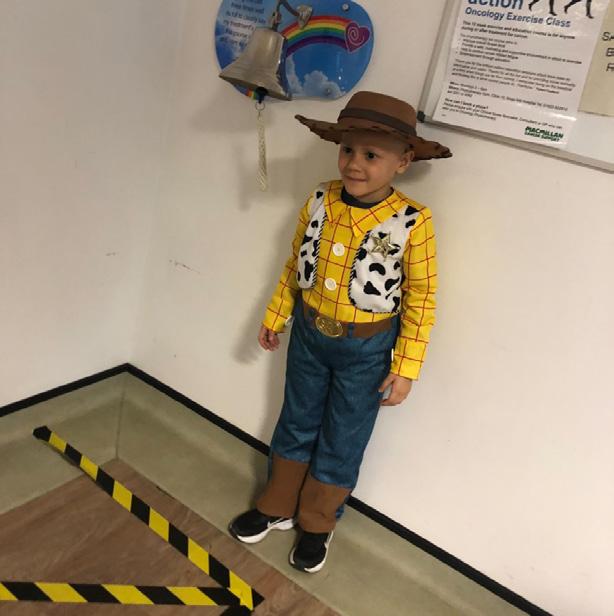
Up until the day he was diagnosed, he never showed any symptoms other than a sinister lump on his left calf. But then, all of a sudden, we were confined to a bed on a hospital ward. Cohen had his Hickman line put in and was stuck to lots of wires and tubes and under constant observation. As he began his intense chemotherapy, we saw the energy drain out of him those first few weeks. He was struggling to stay awake, move around without feeling or being sick, eat his favourite foods, or go to the toilet. He really was a shadow of his old self.
However, on the days he had any energy we would go straight to a park or would spend the day at the Safari Park. Any time he could manage on his bike, or his scooter, would bring him so much happiness. When he finished his intense chemotherapy, he started to get his energy back, and he put more weight on. He was able to start kicking a ball about and got back on his scooter and his bike. It was really important to see him enjoying that time after lots of isolation in the hospital.
I always say if I had a crystal ball during those darkest times, to see that one day we would see the light and get our boy back, it would’ve made those times in hospital so much easier. Sadly, we didn’t have a crystal ball, but that’s why we had to keep positive. Anytime we could get outside walking, or playing together as a family, meant so much to us and helped so much during treatment and recovery, as it still does now.
Even after major surgery to remove the sarcoma in his leg, Cohen didn’t take long to start walking about with the aid of a frame, and within a couple of weeks he was back on the scooter building his strength up. It was important for him to build up his confidence to use that leg again, as a quarter of his calf muscle was removed, and we really weren’t sure what his mobility would be like after surgery. So, to go from discussions with surgeons about removing his leg to see him running around racing his friends, playing football, climbing and jumping around, is amazing.
Since finishing treatment, Cohen has joined the school football team and taken part in fun runs, which he even did when he had his Hickman line in. He took part in the Lidl mud run and this was a very emotional and proud moment to watch him taking on the obstacles, displaying the strength and determination that he showed throughout his whole cancer journey.
My advice to others is to see the strength of children. They have so much resilience. It will be the hardest thing you and they’ll ever go through, but where possible keep them active and get them outside. Anything that allows them to be that ‘normal’ child will not only build their confidence and strength but will also bring them happiness.
Cohen (bottom right), with Kat, dad Adrian and brother, Blake."I always say if I had a crystal ball during those darkest times, to see that one day we would see the light and get our boy back, it would’ve made those times in hospital so much easier."
Fun sports day promotes physical activity for young patients in the South West
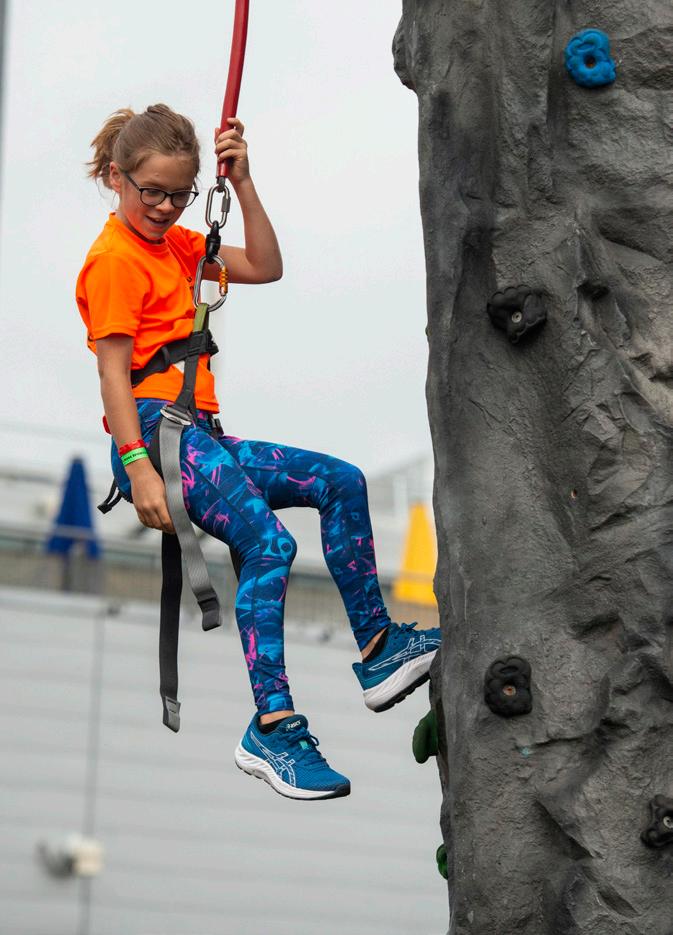
‘Make a Move!’ is a dedicated sports and activities day organised for children and young people who have been treated for cancer and blood disorders, under the care of Bristol Children’s Hospital. Kate Millar, paediatric physiotherapist at Bristol Royal Hospital for Children, tells us more.
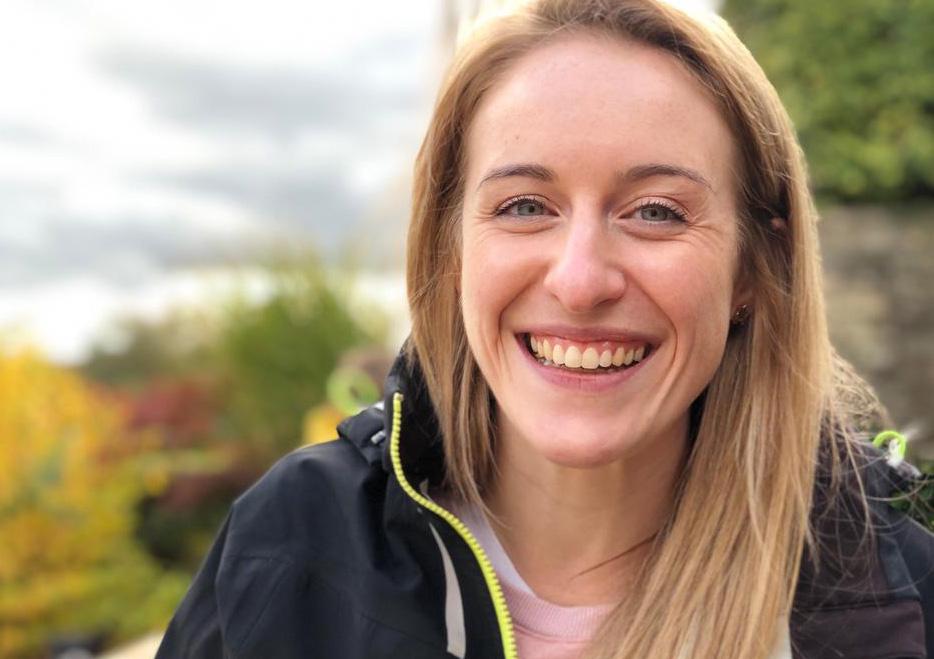
Last September, we organised our first 'Make a Move!' event at the University of Bath (Team Bath), in partnership with our dedicated charity, The Grand Appeal. Our aim was to create a fun day that promoted physical activity for young people under the care of the oncology or haematology teams at Bristol. We were joined by amazing local charities, volunteers, sports clubs and national sports personalities who provided inspiration and information on what our young people could access in their local area.
About Make a Move!
The day was inspired by the successful oncology sports days that had been held by Great Ormond Street Hospital (GOSH) and Sheffield Children’s Hospital. After moving to Bristol, Sarah Cowan, who had been involved in setting up 'Get Active!' at GOSH, sparked the idea of us running a similar day for patients in the South West. Due to the diversity of patients under our care, we invited patients with benign haematological conditions to join us as well.
Being physically active is an important aspect in the treatment and management of oncological and haematological conditions. It also gives many young people a focus away from their medical condition and an environment to meet new people. We wanted to create a day that gave young people the opportunity to experience a wide variety of sports and give families a chance to meet outside of hospital. Our main objective was that the day, and being active, was fun and enjoyable.
The day began with a motivational speech from Paralympic medallist Dimitri Coutya, followed by a warm-up by the wonderful inclusive dance community, Flamingo Chicks. Patients and their families were then free to try out the 22 different sports and activities available, from a climbing wall and wheelchair basketball to dance, indoor skeleton, frame running and golf. It was incredible to see everyone taking part and with the amazing support of Team Bath, local charities and sports clubs, we ensured that there were activities accessible for all ages and abilities. Team Bath also provided us with invaluable support in the form of sports coaches and Olympic athletes who inspired many of our patients. There was also lots of music, face painting, smoothie bikes and glitter, helping to add to the cheer and positivity and make the occasion a memorable one for all.
The event also gave hospital staff who volunteered the opportunity to catch up with patients away from the clinical setting. One said: “As a volunteer it was amazing to see children enjoying sports that they may never have otherwise had the chance to do. It was nice for staff to spend time with patients that they may not have seen for a long time and watch them doing so well. It was a really positive experience for everyone involved.”
Make a Move! was kindly funded by the Bristol Children’s Hospital Charity and The Grand Appeal, and supported by Team Bath, local sports clubs, charities, businesses and the incredible staff from the oncology and haematology teams who volunteered to help organise and support the day.
Back for 2023
Following on from the success of Make a Move! 2022, planning is underway for our next sports day in September. This will again be in partnership with The Grand Appeal, while many of the fantastic sports clubs and charities that came last year will be back again, along with some exciting new additions!
How can we help childhood cancer survivors get active?
PROJECT TITLE: Promoting physical activity in childhood cancer survivors: Using qualitative and co-design methods to inform the development of an evidence-based intervention
LEAD INVESTIGATOR: Professor Linda Sharp
INSTITUTION: University of Newcastle
AMOUNT AWARDED: £73,000 (funded by CCLG)
Project team member, Dr Morven Brown writes...

Not long after starting work as a cancer researcher, I learnt about late effects of childhood cancer and how survivors are at increased risk of developing several, often serious, health problems in later life. This was a bit of a surprise to me, and of particular interest, as about seven years earlier, aged 24, I’d completed treatment for Hodgkin lymphoma. I wondered whether other young cancer survivors knew about these risks, but also what, if anything, could be done to reduce the likelihood of these health problems occurring.
Research has shown that childhood cancer survivors are more likely to develop heart problems, and die from them, than young people who haven’t had cancer. This is largely due to the toxic effects that certain cancer treatments have on the heart. However, research also shows that being physically active could help survivors’ heart health. Despite this, we know they do less physical activity than their peers who haven’t had cancer.
Unfortunately, we don’t yet know the best way to encourage and support survivors to be more physically active. Our recent study - ‘BEing Active after ChildhOod caNcer’ (BEACON) - aimed to understand this very issue. We wanted to carry out research which would help us to design an
‘intervention’ (a package of activities and strategies) which would help and support survivors to be more active.

Our study
We searched medical journals to find and review all previous studies where researchers had spoken to childhood cancer survivors about their physical activity. We found only eight studies (just one from the UK) which gave limited insight into why survivors may struggle with being active.
We then spoke to 31 survivors in UK follow-up care, and 22 parents of survivors. We learnt a lot about the challenges survivors can face - in fact, they reported over 100 factors which influenced their physical activity. These ranged from being unsure about what kind they can do, through to lacking confidence, being worried about safety and the adverse impact of physical limitations and health issues. They also highlighted the importance of support from others and the need for physical activity to be fun and enjoyable.
Lastly, we held online workshops with groups of survivors. They discussed what could help survivors be active, providing useful tips on how to make a physical activity intervention more ‘attractive’. Based on our findings we have designed – on paper - a ‘prototype’ programme aiming to
encourage and support survivors to become more active. Our plan is that this support programme will involve survivors receiving brief advice on physical activity from their oncologist/ nurse specialist before being offered a referral to a trained physical activity coach, tailored online activity sessions and access to a specially developed web app.
Next steps
We’ve recently applied for funding so we can further develop the support programme with survivors and professionals. We want to work out the details of what the support programme should look like, such as the content of the activity sessions or the design of the web app. Once we’ve done that, we will test whether it can be delivered in the NHS.
www.cclg.org.uk/
Children's physiotherapist and CCLG member
Q: Tell us about your career so far?
A: I’ve been a physiotherapist for over 20 years. I’ve spent almost all that time working with children and I have a lot of experience working with children and young people with cancer. I co-lead the recently established international SIOP Rehabilitation and Physical Medicine Special Interest Group which aims to bring professionals together to increase global collaboration in areas such as physical activity in childhood cancer.
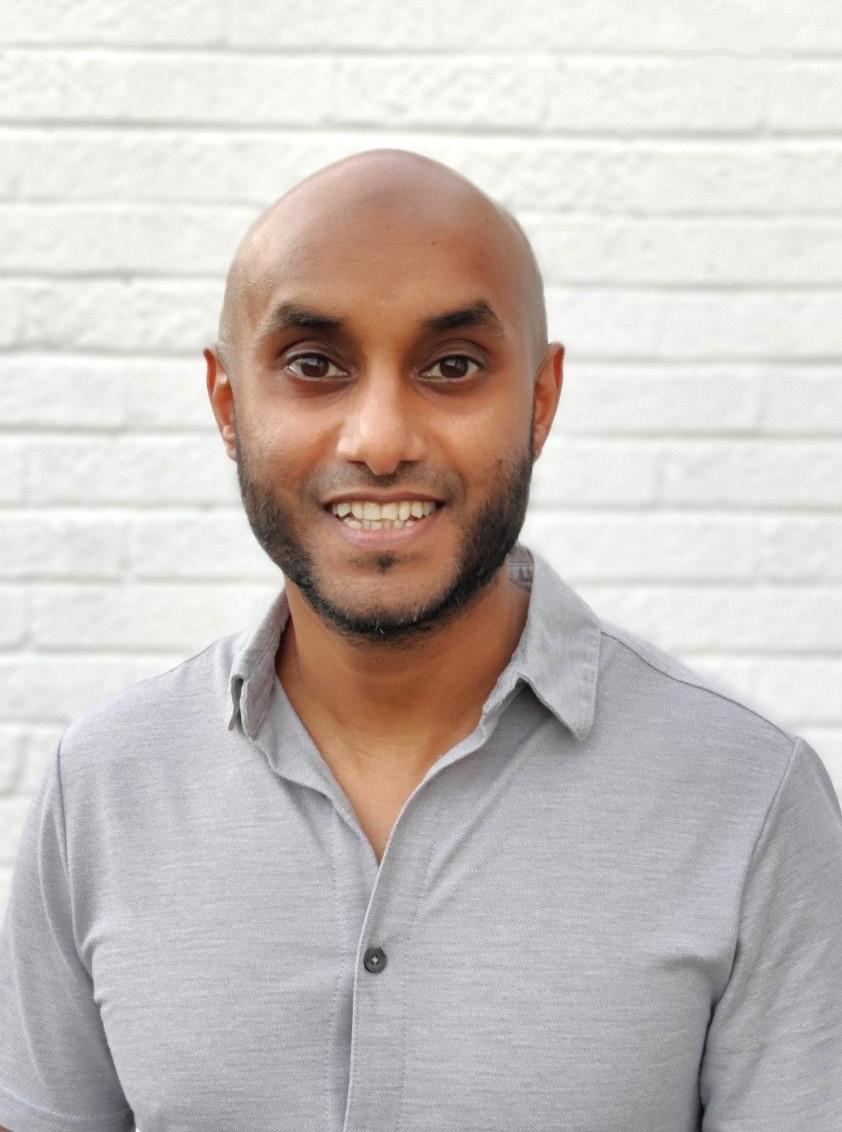
Q: Tell us about the role of a children’s physiotherapist
A: We help prepare children for treatment and surgery through prehabilitation, and rehabilitate them following surgery or the effects of cancer, working on areas including strength, balance and mobility. We play a key role in promoting active and healthy lifestyles and helping to keep children physically active during and after their treatment.
Q: What are the benefits of active lifestyles?
A: In children and adolescents in general, being physically active has many benefits including being associated with better cardiorespiratory fitness and muscular and bone health. On the other hand, higher levels of sedentary behaviour are associated with increased body fat, and poorer cardiometabolic health and fitness, so it’s something we advise against!
The evidence we have for children and adolescents with cancer shows physical activity is safe, feasible and beneficial and can effectively mitigate some of the side effects of cancer treatment. It can improve physical
factors, such as cancer-related fatigue and fitness, and psychosocial factors, such as mood, anxiety and quality of life.
Q: How do you see physical activity and exercise in childhood cancer care evolving in the coming years?
A: I remember when the evidence for exercise in adult care started to emerge, and there was barely anything specific to childhood cancer at that time. This is definitely not the case anymore as the research is rapidly expanding with many innovative exercise and physical activity interventions being delivered in childhood cancer care. We do, however, need much larger and higher-quality studies.
In recent years we’ve started to see international collaborations that will undoubtedly take this field forward. The FORTEe Project and the International Pediatric Oncology Exercise Guidelines (iPOEG) are just a couple of examples of wonderful current international collaborations. They’re bringing together global expertise to produce guidelines, conduct clinical trials and promote exercise therapy in childhood cancer.
Q: Are the challenges with physical activity similar across the world?
A: Physical inactivity is a global problem! The World Health Organisation estimates that more than 80% of adolescents globally don’t meet recommended physical activity levels. Whether it’s in the UK or the other side of the world in Australia, children and adolescents aren’t active to levels recommended to benefit their health.
Despite the encouraging evidence emerging in paediatric exercise oncology, there are unfortunately gaps in evidence elsewhere. There is less evidence about physical activity from low-/middle-income countries and resource-limited settings. We already know there is a huge gap between children with cancer in high-income and those in low-/middle-income settings in relation to survival and access to care. With developments in exercise oncology, it’s vitally important as a community that we aim to reduce health inequality and, where we can, ensure research findings are applicable to all children with cancer.
Q: Do you have a message for children and their families affected by cancer?
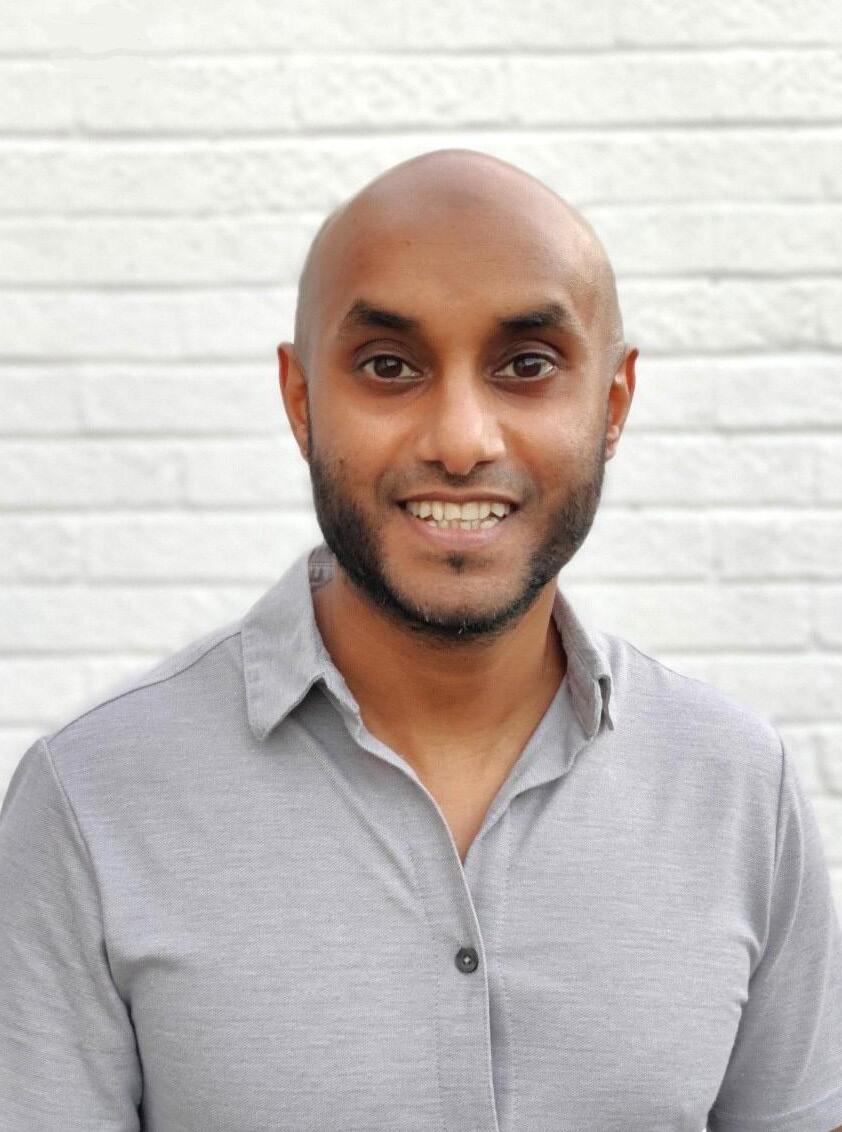
A: Physical activity and exercise is hugely beneficial to children and young people at every stage of the cancer journey, whether during or after treatment. It can improve so many things including physical health, self-esteem and confidence, and can help with many of the side effects of cancer treatment
Any activity is better than none, so do what you can, do it when you can, and make it fun!
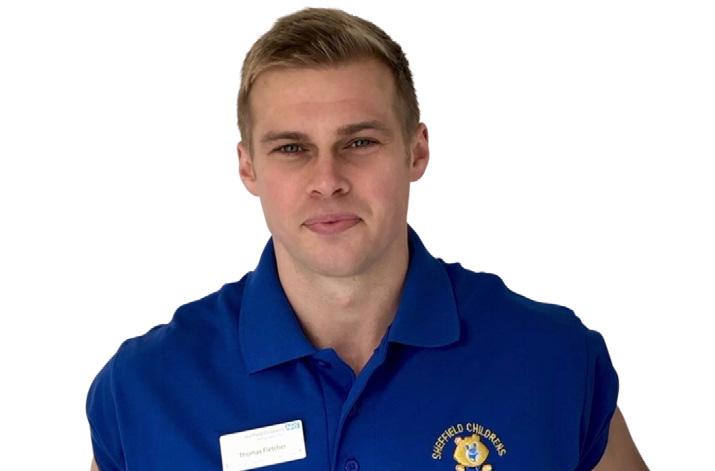
What types of physical activity are there and what are their benefits?
Strength training helps minimise the risk of reduction in bone mineral density due to treatment and will also help the functionality of muscles affected by peripheral neuropathy. Cardiorespiratory-based exercise helps make the heart, lungs and circulatory system more efficient – meaning we can do more without feeling tired or breathless –and, long term, will reduce fatigue-like symptoms. Cardiorespiratory activities also help modulate the immune system, boosting immunity.
What are some examples?
• Yoga not only builds strength in the muscles but also the flexibility and elasticity of muscles – check out Cosmic Kids Yoga on YouTube
• Playground activities such as climbing frames and monkey ladders help build strength in a fun environment
• Active play is a great way for children and young people to stay fit and healthy, with games like ‘hopscotch’, ‘hide-and-seek’ and ‘What’s the time, Mr Wolf?’ all good examples
• Cycling, running, swimming, rowing and brisk walking are all good forms of activity
• Dance is a fun way not only to build a resistance to fatigue but also to improve balance and coordination - whether that’s short TikTok or Fortnite dances or more traditional forms
• Phone apps such as Active Arcade or console-based activities such as Wii Fit or Wii Sports can be used to promote activity
• Gardening is great for grip strength and will strengthen your child’s bond with nature, which can have a significant positive impact on mental health and wellbeing
How do I know the right amount of physical activity for my child?
The RPE tool is used to measure exertion (how difficult or tiring) something is when it’s applied to exercise and activity. It is a 1-10 scale (with 10 being the hardest) that you can use to help your child to tell you how tired an activity makes them. Generally, zones 3-5 are good for warming up and zones 5-7 appropriate for the main activity.
Do be sure to check for other signs of fatigue. These can include shortness of breath/heavy breathing,
change in colour – such as red cheeks – and sweating. And, while it’s good for your child to be physically active, it’s still important to balance activity with adequate recovery time and to gradually increase activity levels as your child becomes more accustomed.
What can I do to support my child’s physical activity?
• Where possible, engage your child in group activities as evidence shows that exercise is more likely to be maintained in group settings
• Start off with a small amount and gradually increase the levels as your child’s resistance to fatigue improves
• Contact your local council and sports clubs as they often offer schemes that support people with health conditions, whether that’s discounts or specialist clubs and activities
• Journal your child’s progress and measure improvements – this will more likely maintain activity levels if you can show them the positive impact it’s having
• Gradually reduce your input and give your child ownership over their activity, to allow them to develop and grow their own thoughts and enthusiasm for it
Have a question to ask one of our experts?
Please get in touch by emailing info@cclg.org.uk or via DM on our social channels.
